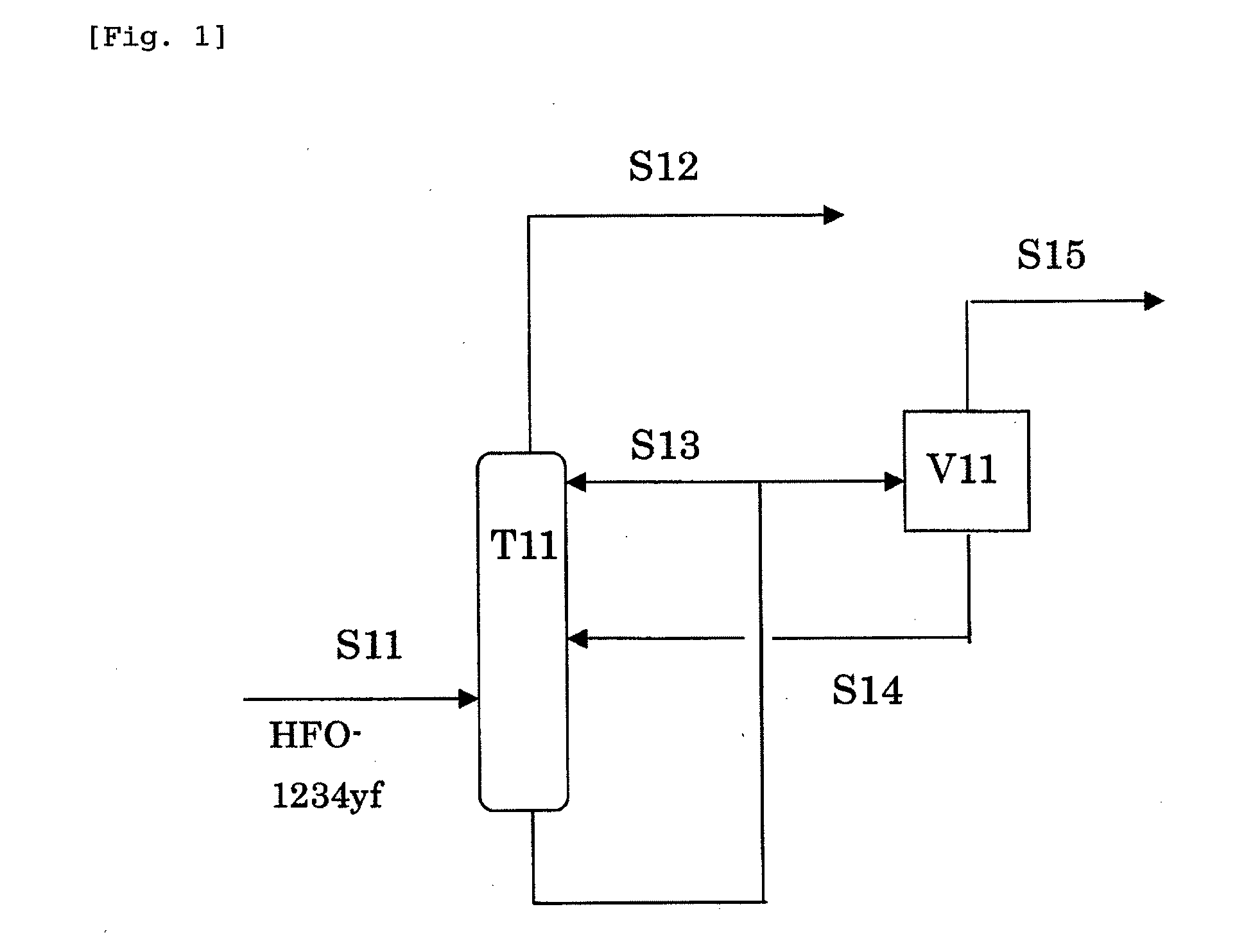Method for removing moisture from fluorine-containing compounds
a technology of fluorine-containing compounds and moisture removal, which is applied in the direction of halogenated hydrocarbon separation/purification, halogenated hydrocarbon preparation, and separation processes, etc., can solve the problems of not being able to collect all of them, affecting global warming, and their diffusion due to leakage, etc., and achieves less environmental impact, simple process, and reduced moisture content of fluorine-containing compounds
- Summary
- Abstract
- Description
- Claims
- Application Information
AI Technical Summary
Benefits of technology
Problems solved by technology
Method used
Image
Examples
example 1
[0037]Moisture contained in 2,3,3,3-tetrafluoropropene (HFO-1234yf) was removed by the following method. The method is described on the basis of the flow diagram shown in FIG. 1.
[0038]Using a water absorption column T11 (height: 3 m, inner diameter: 12 cm), HFO-1234yf with a moisture content of 2,000 weight ppm was continuously supplied from the bottom portion of the column at a rate of 13.8 kg / hr (S11). Meanwhile, an aqueous solution of lithium chloride with a concentration of 42 wt. % was supplied from the top portion of the column and sprayed into the column (S13). The pressure to supply HFO-1234yf into the column was 0.05 MPaG, and the column top temperature was 25° C.
[0039]HFO-1234yf supplied from the bottom portion was extracted from the top portion and sent to the subsequent step (S12). This operation allowed sufficient contact of HFO-1234yf contaminated with moisture supplied from the bottom portion with the aqueous solution of lithium chloride. Consequently, HFO-1234yf with...
PUM
| Property | Measurement | Unit |
|---|---|---|
| inner diameter | aaaaa | aaaaa |
| height | aaaaa | aaaaa |
| temperature | aaaaa | aaaaa |
Abstract
Description
Claims
Application Information
 Login to View More
Login to View More - R&D
- Intellectual Property
- Life Sciences
- Materials
- Tech Scout
- Unparalleled Data Quality
- Higher Quality Content
- 60% Fewer Hallucinations
Browse by: Latest US Patents, China's latest patents, Technical Efficacy Thesaurus, Application Domain, Technology Topic, Popular Technical Reports.
© 2025 PatSnap. All rights reserved.Legal|Privacy policy|Modern Slavery Act Transparency Statement|Sitemap|About US| Contact US: help@patsnap.com

